Holland Tringham was a Victorian artist who moved to Streatham at the height of his fame, in the late 19th century. He is best known, locally, for his six sketches of the old village of Streatham, copies of which are on the walls of this pub which bears his name.
Framed prints, drawing and text about the Howland family.
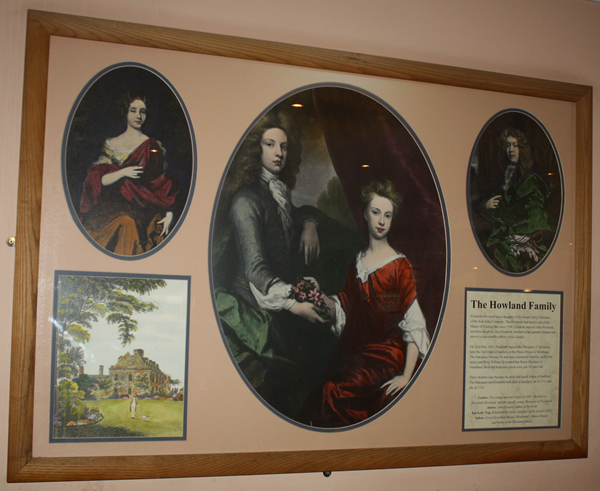
The text reads: Elizabeth Howland was a daughter of Sir Josiah Child, Chairman of the East India Company. The Howlands had been Lords of the Manor of Tooting Bee since 1599. Elizabeth married John Howland, and their daughter, also Elizabeth, was heir to her parent’s fortune and also to a considerable portion of Sir Josiah’s.
On 23rd May 1695, Elizabeth married the Marquess of Tavistock, later the 2nd Duke of Bedford, at the Manor House in Streatham. The Marquess became, by marriage, immensely wealthy, and in the same year King William III created him Baron Howland of Streatham. Both the bride and groom were just 14 years old.
Their children later became the third and fourth Dukes of Bedford. The Marquess and Elizabeth both died of smallpox, he in 1711 and she in 1724.
Centre: The young married couple in 1695. The heiress Elizabeth Howland, and the equally young Marquess of Tavistock
Above: John Howard, father of the bride
Far left: Top, Elizabeth Howland, daughter of sir Josiah Child, below, Great Streatham House, Streatham’s Manor House and home of the Howland family.
Framed prints and drawings about Sir Henry Tate.
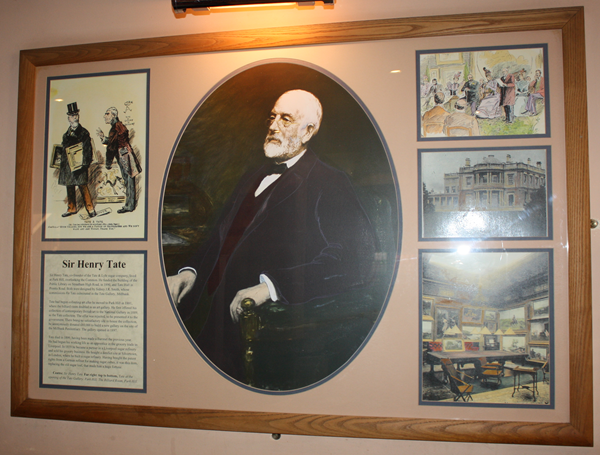
The text reads: Sir Henry Tate, co-founder of the Tate & Lyle company, lived at Park Hill, overlooking the Common. He funded the building of the Public Library on Streatham High Road, in 1890, and Tate Hall in Prentis Road. Both were designed by Sidney J.R. Smith, whose commissions for Tate culminated in the Tate Gallery, Millbank.
Tate had begun collecting art after her moved to Park Hill in 1881, where the billiard room doubled as an art gallery. He first offered his collection of contemporary British art to the National Gallery in 18889, as the Tate collection. The offer was rejected, so he presented it to the government. There being no satisfactory site to house the collection he anonymously donated £80,000 to build a new gallery on the site of the Millbank Penitentiary. The gallery opened in 1897.
Tate died in 1899, having been made Baronet the previous year. He had begun his working life as an apprentice in the grocery trade in Liverpool. In 1859 he became a partner in a Liverpool sugar refinery and sold grocery business. He bought a derelict site at Silvertown, in London, where he built a sugar refinery. Having bought the patent rights from a German refiner for making sugar cubes, it was this item, replacing the old sugar loaf, that made him a huge fortune.
Centre: Sir Henry Tate
Far right: top to bottom, Tate at the opening of the Tate Gallery; Park Hill, The Billiard Room, Park Hill
Framed drawings and text about Holland Tringham.
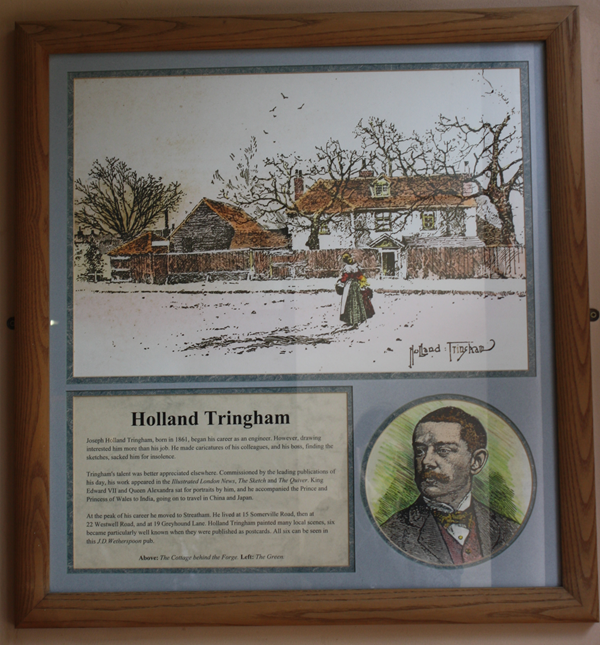
The text reads: Joseph Holland Tringham, born in 1861, began his career as an engineer. However, drawing interested him more than his job. He made caricatures of his colleagues, and his boss, finding the sketches, sacked him for insolence.
Tringham’s talent was better appreciated elsewhere. Commissioned by the leading publications of his day, his work appeared in the Illustrated London News, The Sketch and The Quiver. King Edward VII and Queen Alexandra sat for portraits by him, and he accompanied the Prince and Princess of Wales to India, going on to travel in China and Japan.
At the peak of career he moved to Streatham. He lived at 15 Somerville Road, then at 22 Westwell Road, and at 19 Greyhound Lane. Holland Tringham painted many local scenes, six became particularly well known when they were published as postcards. All six can be seen in this J.D. Wetherspoon pub.
Above: The Cottage behind the Forge
Left: The Green.
A collection of Holland Tringham’s sketches.
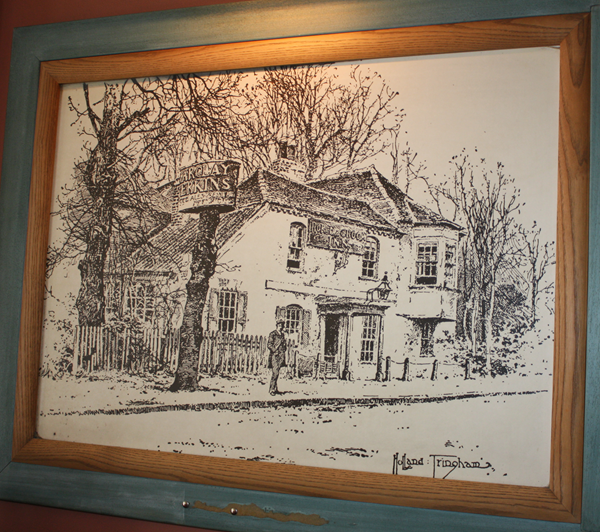
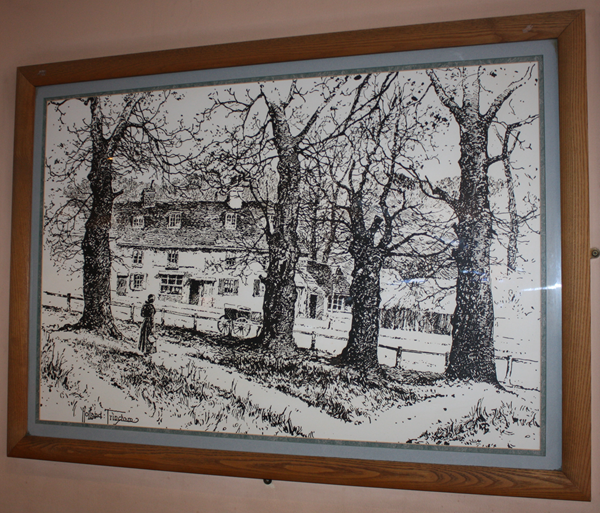
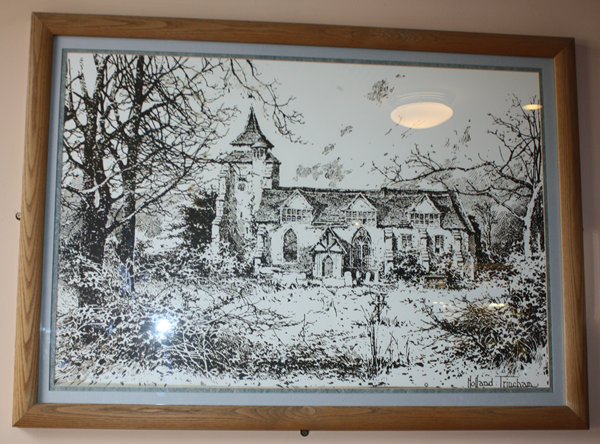
A framed photograph of High Road, Streatham, c.1910.
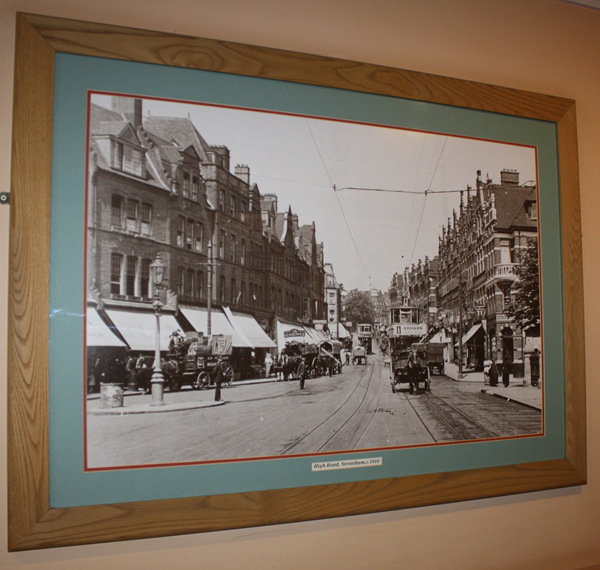
A framed photograph of Mitcham Lane, Streatham, c.1908.
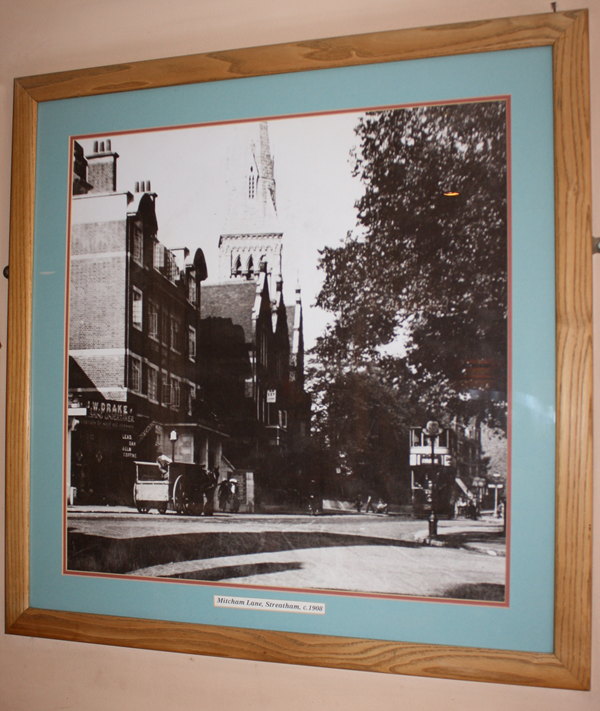
A framed photograph of High Road, Streatham, c.1912.
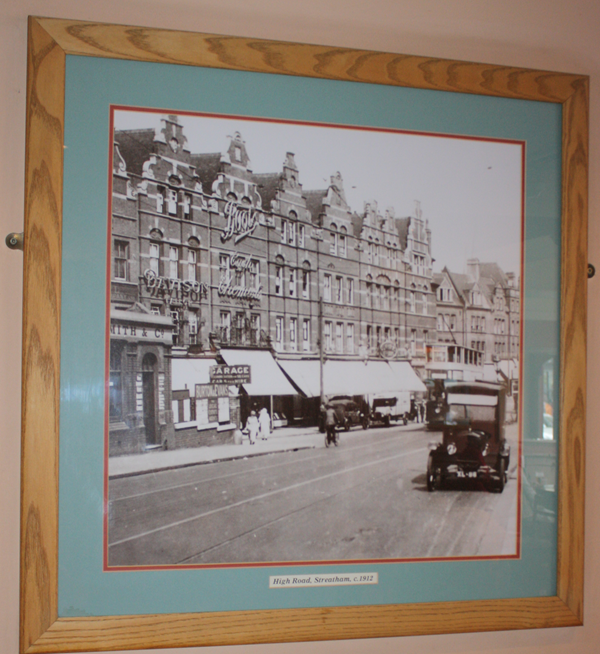
External photograph of the building – main entrance.
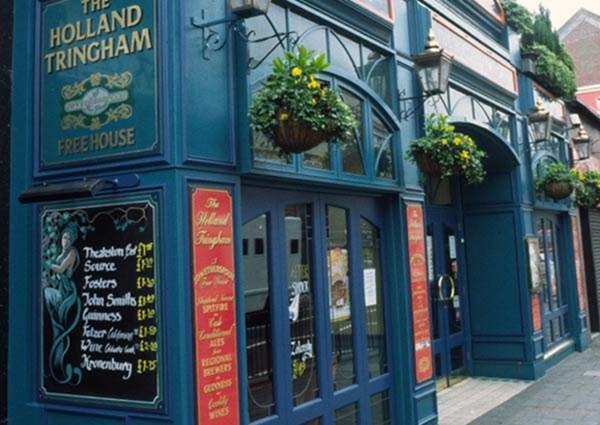
If you have information on the history of this pub, then we’d like you to share it with us. Please e-mail all information to: pubhistories@jdwetherspoon.co.uk